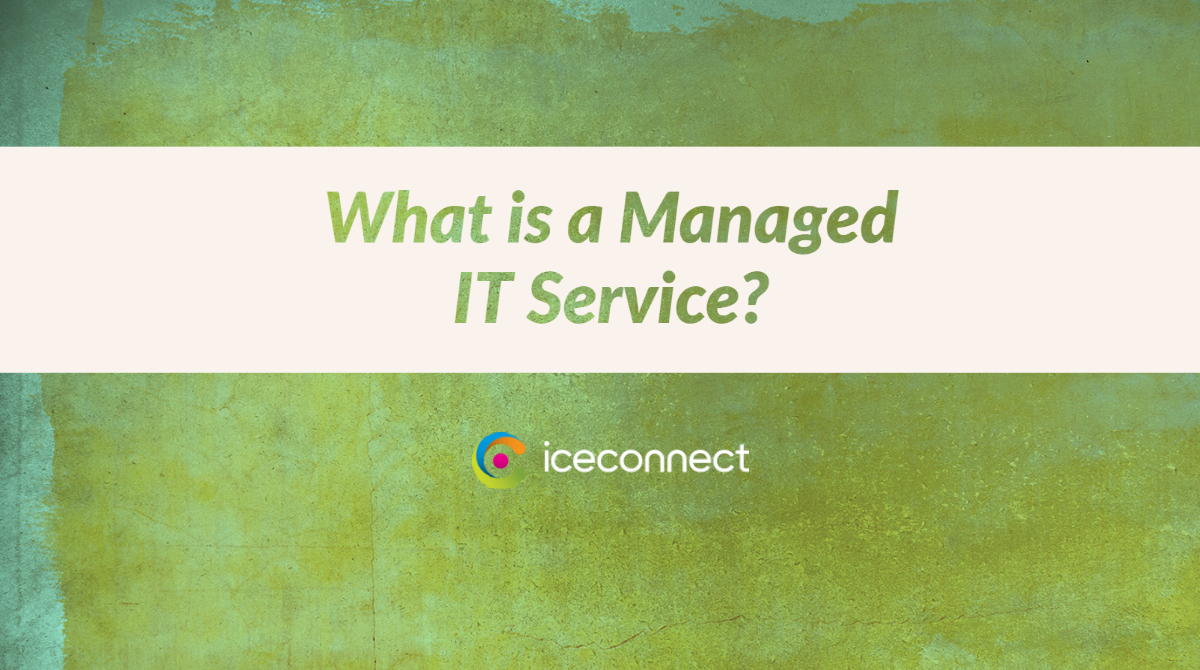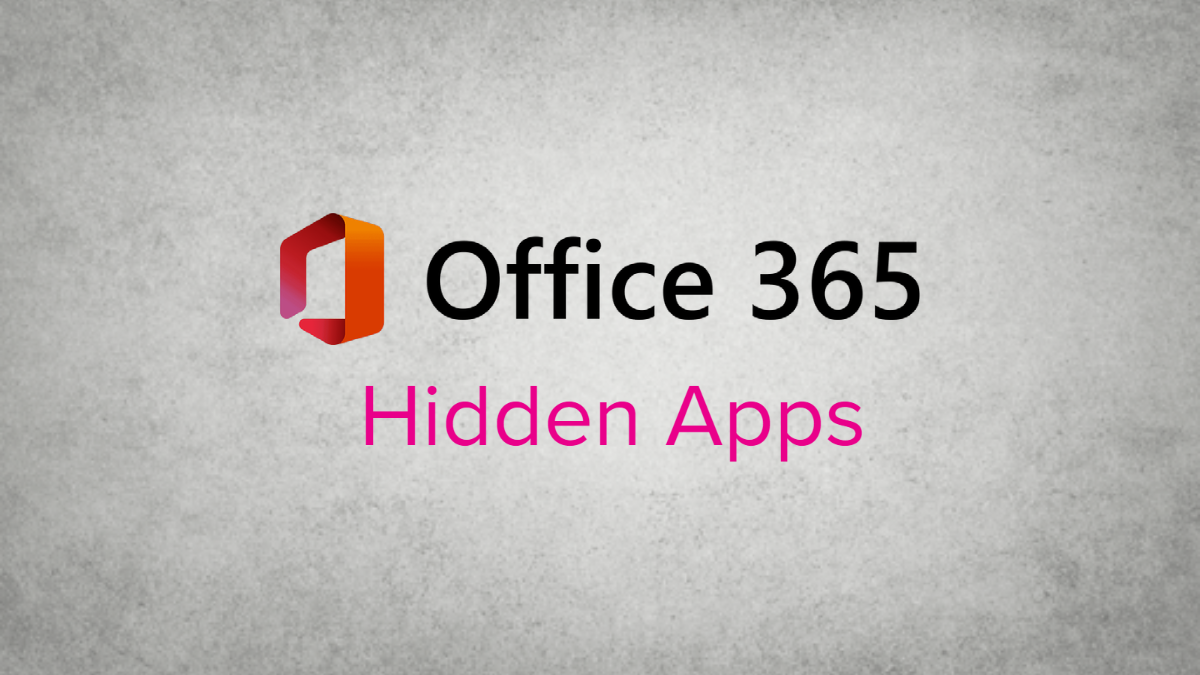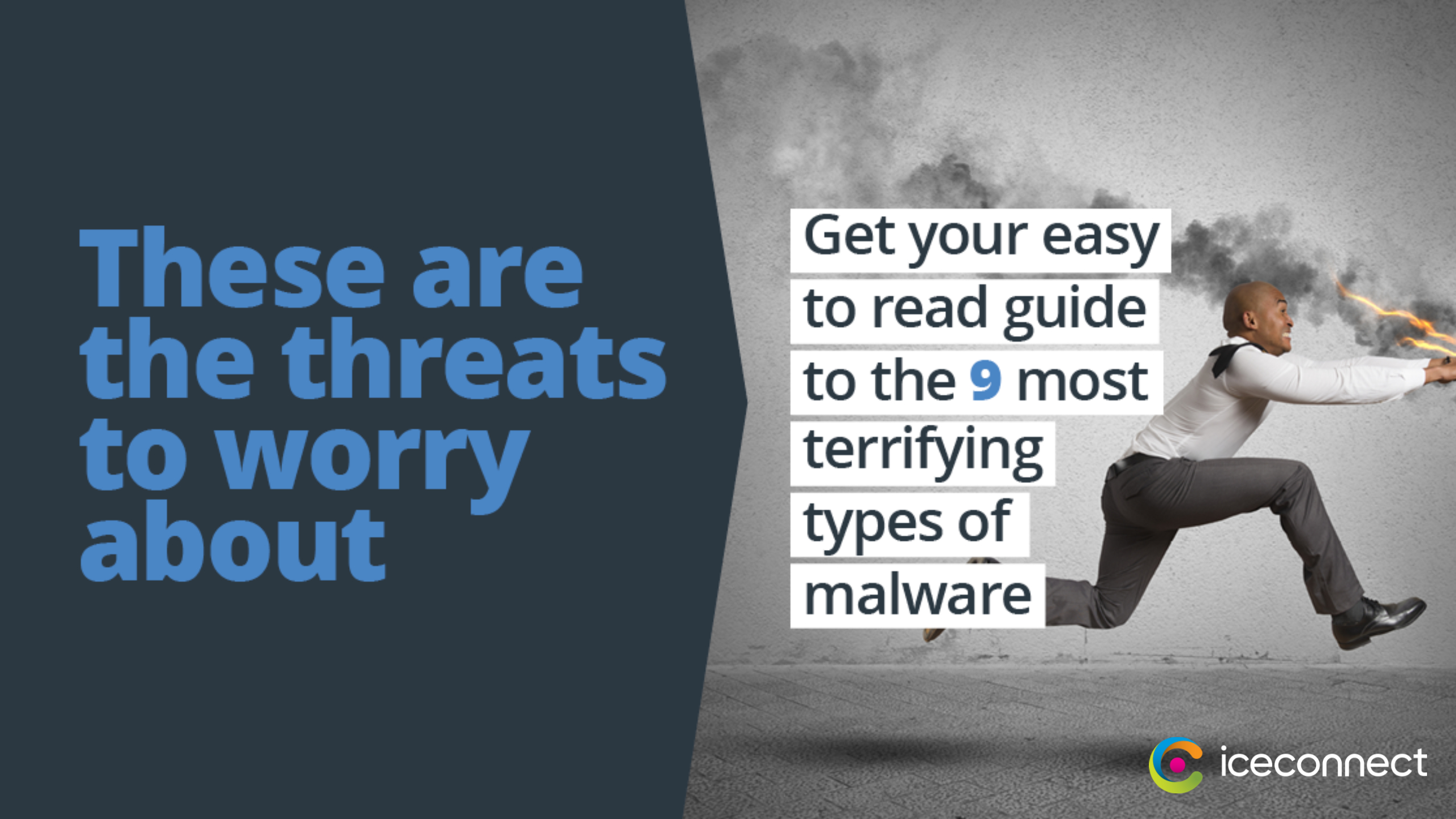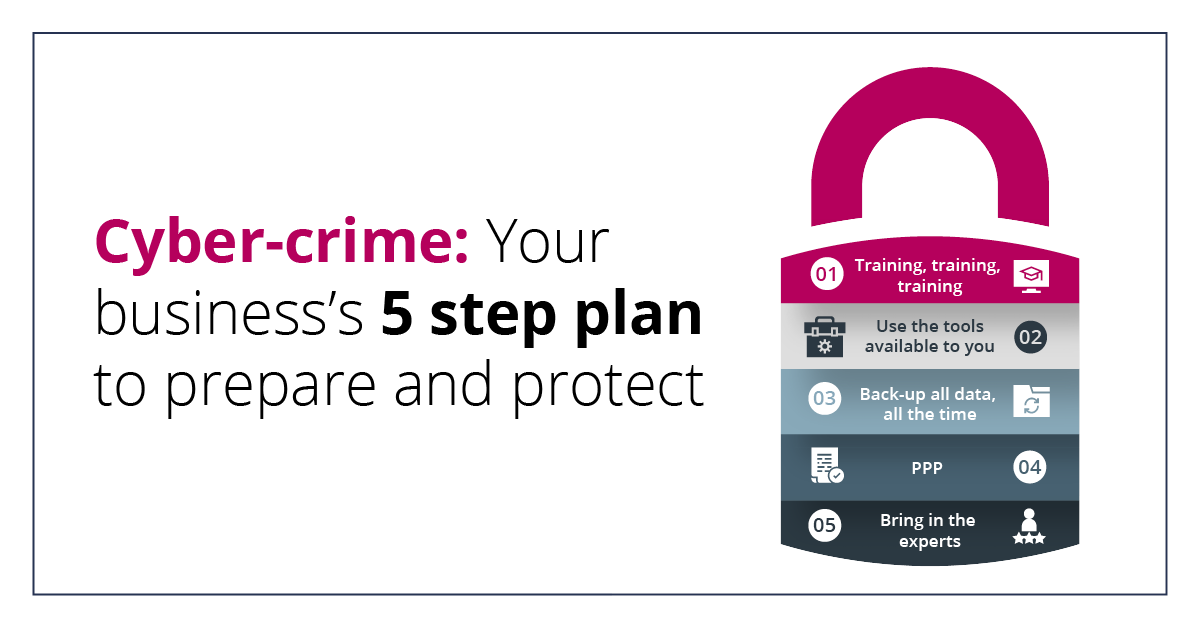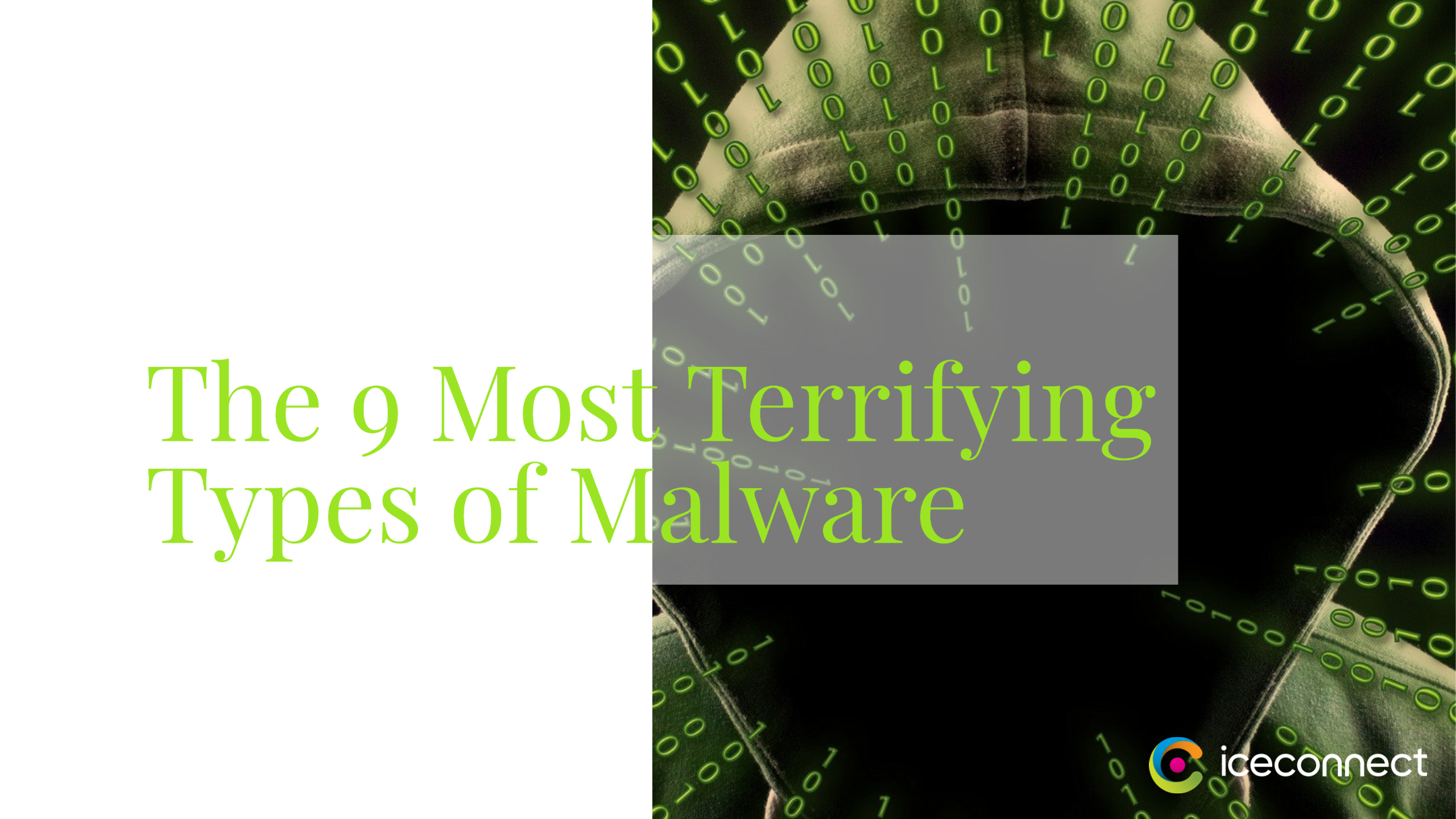It’s not surprising that the rise of digital and mobile technologies has led to increased criminal activity. With so much of our lives now happening on laptops, smartphones, tablets, etc., it’s no wonder cyber hackers are targeting online accounts with greater frequency. It is also vital for individuals to protect their account security by taking advantage of 2-factor authentication or 2FA, which will help ensure a safer online experience.
Continue readingWhat is a Managed IT Service
Two-thirds of businesses use managed outsourced IT services, but what are they and how do they work?
Blog Sections
- What can a managed IT service do for your business?
- Managed security service provider
- Advantages of managed IT services
- Disadvantages of managed IT services
If you are looking for outsourced IT support in London, managed IT is a great option.
What is Outsourced IT Support?
Outsourced IT support is a third party IT service that eliminates the need for your business to maintain its network and computers.
Haree Patel, CEO
Managed IT ensures that your devices are always up to date with the latest security features, ensuring your network is always up and running, the VoIP phones always ring and all sensitive data is secure and backed up.
Managed IT also provides disaster recovery services should anything happen to your data centre or any of your hardware. It will save you time and money and provide peace of mind regarding uptime and downtime.
Having up-to-date IT is essential for modern businesses and COVID-19 and remote working have only exacerbated that. Having said this, it is no small task to transition to new IT operations and systems.
A good MSP (managed service provider) will be able to provide you with an in-depth review of your current IT network. Then, based on the findings, they can make recommendations to proof your business IT for the future. For example, a straightforward recommendation we often make to our clients is to upgrade their Wi-Fi router’s setup to a Wi-Fi 6 system which improves capacity, connectivity and security.
In the last year, managed IT services have become powerful assets, partnering with businesses to adapt to pandemic-related restrictions. They helped clients adopt remote working and brought value through business resilience solutions like RMM (remote management and monitoring) along with cloud-based services such as VoIP phone systems.
What Can a Managed It Support Service Do for Your Business?
Managed IT is a business model in which an outsourced service provider manages your information technology. Meanwhile, a managed service model tends to be subscription-based in which providers usually agree to pay a certain amount each month in exchange for ongoing system management.
The specifics of what a managed IT plan entails can vary depending on your organisation’s individual needs and the company’s skillset. Most managed services providers can offer a basic package of daily support and more sophisticated deals that include disaster recovery, VoIP, onsite engineers, server maintenance, backup recovery and printer management, to name a few.
Managed IT services usually encompass a wide range of internet and computer functions, whereas managed IT solutions provide business owners with solutions encompassing everything from network, application and system management to payroll, server maintenance, backup/recovery services and printer management.
Managed IT can also benefit staff when it comes to equipment. For instance, remote workers requiring new equipment such as keyboards or monitors can order this themselves. This means that whilst providing visibility and control over supplies for IT departments, accounting won’t need to worry about running these purchases through expenses either.
Small and medium-sized businesses (SMBs) can use a managed service provider (MSP) to provide in-house cloud services or act as brokers for other cloud providers. The bonus of this process is that your MSP will have a responsibility to ensure all the software is fully installed and monitored to ensure up-time and functionality.
Managed Security Service Provider
As the risk of security breaches grows, many companies have opted to outsource their IT needs and responsibilities to protect equipment and data. Managed security service providers (MSSPs) provide efficient patch management (security updates) and responsive backup services.
The advantages and disadvantages of a managed IT service depend on the type of service, but there are common considerations that any business should take into account before outsourcing that function, including the following.
Advantages of Managed It Services
1. IT Expertise
Building and maintaining a top-notch IT team can be expensive, time-consuming and demanding. That’s why you might want to consider outsourcing the part of your company that needs technical support to an experienced service provider.
2. Predictable Costs
Acquiring a small in-house team that provides fully comprehensive support will cost hundreds of thousands of pounds each year. That’s not even including recruiting and set up costs!
Rather than paying open-ended prices when IT issues occur with freelancers, businesses can have a contract that outlines what they will pay in monthly instalments to account for potential problems. In the long run, managed IT will reduce costs.
With the right support plan, you will have peace of mind knowing that your IT will only cost a fixed fee each month regardless of the situation.
3. Maintenance & Upgrades
Managed IT takes away the need for organisations to worry about software updates and they can have access to new technologies that would otherwise have been out of their reach.
4. Cost & Time Savings
Outsourcing the management of security services, for example, reduces the demands for an in-house IT department. Outsourcing your IT also outsources management headaches such as PAYE, holidays, absences and performance management.
Disadvantages of Managed It Services
1. Control
If there’s an outage or incident, the business has little recourse as they rely on third-party help. Theoretically, a well-managed service provider will respond faster than an internal IT team. An internal IT team for a small or medium-sized business will have nowhere near the expertise or resources as a dedicated IT support provider such as ourselves.
2. Flexibility
The flexibility of a managed IT service is more limited than having a solution customised to business needs. You will find that as your business expands, you will have to increase your level of IT support to meet demands.
3. Reliability
If your MSP goes bust or has a catastrophic event like a fire, you are left vulnerable. In the latter case, iceConnect has multiple redundancy protocols to keep their clients’ networks fully functioning in the event of a catastrophe.
Whether or not businesses decide to go down the route of a managed IT service provider, it’s not a market that is going away any time soon. In fact, according to a new report from Global Market Insight, this particular segment of the industry was estimated to be worth $350 billion in 2019 and continues to grow larger with COVID-19 pushing many organisations into adopting managed services.
As the number of offerings and the capability of existing offerings grows, there is no doubt that we will see companies of all sizes making use of outsourced managed IT services for varying parts of their business.
To help all those scouring the market for the perfect outsourced managed IT support provider, we have created a managed IT support buyer’s guide. This comprehensive PDF document covers every single question you should be asking when choosing an IT support provider.
Simply click on the link below to download the guide or contact us directly if you’d like to book a free, no-obligation demo of how iceConnect can boost your business’ productivity.
Why not contact us to book a free no-obligation managed IT support demo with iceConnect’s director, Haree Patel.
The Top 10 Apps You Didn’t Know Were on Microsoft 365
Office 365 is more than just Outlook, PowerPoint and Excel. There are a plethora of applications that can boost your productivity. This article will show you ten applications you probably didn’t even know existed.
Continue readingThe Biggest Cybersecurity Threat to Your Business is Your Staff
Here we’re going to take a look at the cost of insider attacks and what you can do to prevent these from occurring within your business.
Continue readingHow to Keep Your Data Safe in the Event of a Fire?
An office fire is one of the most horrific things that can happen to a business owner. Once you know your staff are safely out of the building, your thoughts then turn to what else you could lose in the fire. The data you lose can be even more damaging to your business than the physical losses you experience. It’s the phone call that no one ever wants to receive, but it’s something any business owner or office manager should prepare for.
Is Your Data Backed Up?
Whilst you have insurance for these types of emergencies, you might start to think about what needs to be replaced and soon realise there was no backup for your data. Maybe your automated backup stopped working and you put off doing the manual backup or asked someone else to do it. But what happened to the backup in the fire?
The Reality of the Situation
For businesses who experience this kind of data loss, the chance of going under is greater than the chance of survival. 50% of businesses that lose data during an emergency end up going into administration, whilst 93% of businesses that lose their data for longer than ten days will go under within the next year. For companies that experience a severe fire, 70% of them go out of business within five years, with 30% closing within a year. It’s time to take action to protect your future today.
A Reliable, Verified Data Backup
For businesses of any type or size, having a robust data backup is a serious requirement. While a fire is certainly one reason to consider this, there are many other emergencies that will necessitate a backup, from spilling a cup of coffee or losing your laptop to something more extreme like ransomware. Though it takes extra work to back up your data and secure your network, you can feel safe knowing that you are protected during an emergency.
Check Your Backup Is Functioning Properly
Many companies today fail to check that their backup is still working, resulting in panic from business owners who realise it stopped working months ago. It’s critical to check that the backup is going ahead and to verify the data to check it’s backing up correctly. You should back up literally all data, including projects, accounts, emails and website content. Anything that would have a negative effect on your business if it was lost, make sure you back it up.
With so many different ways to back up your data, there’s no excuse not to start the process today. A great IT service provider can help you understand the options available to you and protect you from any emergencies in the future.
Protect Your Devices
Without locking your devices in a fireproof box, there’s no way to guarantee protection of your devices from a fire. However, you can take plenty of steps to minimise the loss you would experience during an emergency. Firstly, we encourage you to make sure every device is fully insured with business insurance or their own insurance. Make sure that the insurance covers accidental damage, theft and damage from disaster. Take the time to run through what you would do if a device was stolen. How would you get the data back and know that you are protected? Create a procedure for your company for various scenarios so everyone knows how to react if this does occur. Ensure that everyone in your workplace knows who to contact if it does happen so the plan can be used and all data can be wiped from the device.
Also, make sure you follow these top tips in your workplace:
- All data on your devices should be encrypted
- Use multi-factor authentication if possible on devices
- Password-protect devices and software
Know What Devices Your Business Has
As businesses grow, it’s easy for office managers to lose track of the number of devices in a workplace. Questions you should be able to answer include:
- Who uses which device in the office?
- What happened to older devices when they were replaced?
- Who in the office uses more than one device?
Make sure you create and regularly update an inventory in your office, which should also be backed up. It will make keeping track of the devices in your office much easier, especially with more people working from home. When someone leaves the company, you can double check that all devices have been returned so there are no issues or security concerns further down the line.
Paperless Solutions
If your business hasn’t already started to reduce its paper consumption, this is something we highly recommend doing. As well as being kinder to the environment, it also offers additional benefits for business owners. During a fire, you wouldn’t be worried about shelves and filing cabinets packed with critical paper records. Make your life easier by creating a digital copy of everything in your office. You can then store this securely online and back it up.
Planning for a disaster is a crucial activity for businesses of all shapes and sizes and those who prepare in advance are the ones with the greatest chance of surviving. By following the tips listed above, you can sleep soundly at night knowing your data is backed up and you are prepared for all eventualities.
VoIP Phone Systems for Dental Practices
Streamline your patient journey and boost turnover
Continue readingCyber-Crime: Prepare and Protect Your Business in 5 Steps
Every year, the world economy loses more than $1 trillion to cyber-crime. Do not become part of that statistic.
Continue readingThe 9 Most Terrifying Types of Malware
In the past, life was so much simpler when it came to protecting your computers from viruses. However, with the introduction of the internet and an increasing number of greedy people in the world today, hacking has now become a profession for many individuals. Automated tools make hacking businesses easier than ever before as cyber-attacks are impacting companies each day.
Being aware of the different ways you could be targeted is the first step to defending your systems. Keep reading to learn about the nine most terrifying kinds of malware to prepare for.
1. Viruses
Today’s malware doesn’t just include viruses, which is why companies need to look at protecting themselves with a stronger solution than just antivirus software. Viruses can attack your system by infecting, reformatting or deleting files, often leaving your computers very difficult to clean up. Viruses quickly take over your network after replicating themselves, making it impossible to complete even your basic daily tasks.
2. Worms
Since the 1990s, worms have been taking down networks after a single person opens an infected email. Cleaning up after worms can be almost impossible. There are many cases where companies find that they have to delete or quarantine files that are affected. The worst-case scenario even involves rebuilding your computers from scratch as worms replicate themselves and exploit other software. One of the worst examples of this type of attack was the ‘iloveyou’ worm, which affected 50 million Windows machines in 10 days.
3. Trojans
Trojans have replaced worms in recent years and are now one of the most popular hacking tools. Trojans take advantage of a lack of security knowledge and will usually arrive in an email attachment. This is one of the most challenging types of malware to defend your network from as they are easy to write and can look incredibly authentic. Make sure you educate your team on the importance of not opening emails if they don’t recognise the sender.
4. Malware Hybrids
A malware hybrid takes any two of the three options we’ve listed above and combines them to create malware with unique attributes. For example, the malware might appear to be a trojan but have the power of a worm. These attacks can be very hard to clean up after, causing havoc for businesses that fall victim to this type of malware.
5. Ransomware
If you talk to an IT professional today, they’ll most likely tell you that ransomware is their top concern when it comes to malware as businesses of all shapes and sizes are the target of it. This type of malware encrypts your data and holds it hostage, so you might lose your customer records, emails, files and anything else you store on your network. You’ll then be asked to pay thousands of pounds in cash or cryptocurrency to retrieve your data. Ransomware is usually triggered by opening an attachment or landing on an unsecured site. To avoid devastation from a ransomware attack, make sure you…
- Back your files up regularly
- Train your team to spot the signs of an attack
- Do not open any suspicious emails
6. Files Malware
Files malware isn’t necessarily considered to be a different category, but it still poses a huge threat to businesses today. About 50% of malware attacks are delivered in this way, although that figure is only continuing to increase. Traditional malware relies on files to infect your network, but files malware relies on memory or parts of computer systems without files. For this reason, it’s much harder to both detect and control this type of attack.
7. Adware
Another challenging type of malware to both detect and stop is adware. While it’s not necessarily as dangerous to your system as other options on our list, you’ll find that it can slow down your computers or make you vulnerable to other attacks. If you discover that anything has been installed on your computer without your permission, ensure that it is dealt with immediately to avoid further issues.
8. Malvertising
You can probably guess that malvertising is a combination of malware and advertising. This type of malware is hidden by advertising, but it shouldn’t be confused with adware. Malvertising takes place when a criminal pays for an advertisement on a real website. However, when you click through on this advert, it will redirect you to a malicious site. Alternatively, malware might be installed straight to your device. What’s even more worrying about malvertising is that even genuine adverts can be attacked in this manner and you might not even have to click through to experience the issue. In this case, it would be referred to as a drive-by download attack, which is almost impossible to notice and avoid.
9. Spyware
The final terrifying type of malware you should be aware of is spyware. As the name suggests, this type of malware is used to spy on you. Spyware will monitor the sites you visit and anything you type, learning about any activity you perform on your device. Used to find login information and passwords, companies risk losing valuable and confidential information. Spyware is activated in the following ways:
- Attachments
- Pop-ups or notifications
- Downloading media from unreliable sources
The impact that malware can have on businesses can range from delays to your working processes all the way to bankruptcy. By making yourself more aware of the risks that your business faces every day, you’ll decrease your chances of becoming the victim of an attack. Within your organisation, you’ll want to create a culture where cyber security is taken seriously and your employees are educated on these risks.
Working with an IT support partner can offer you software, training and procedures to help protect your business. Make sure you can defend your business before an attack instead of leaving your company with the difficult task of cleaning up afterwards. An IT partner will take the hard work out of your hands and offer you the solution you need to look after your business for many years to come.
Click the link below if you’d like to book a free demo to discuss how iceConnect can protect your business from all online threats.



